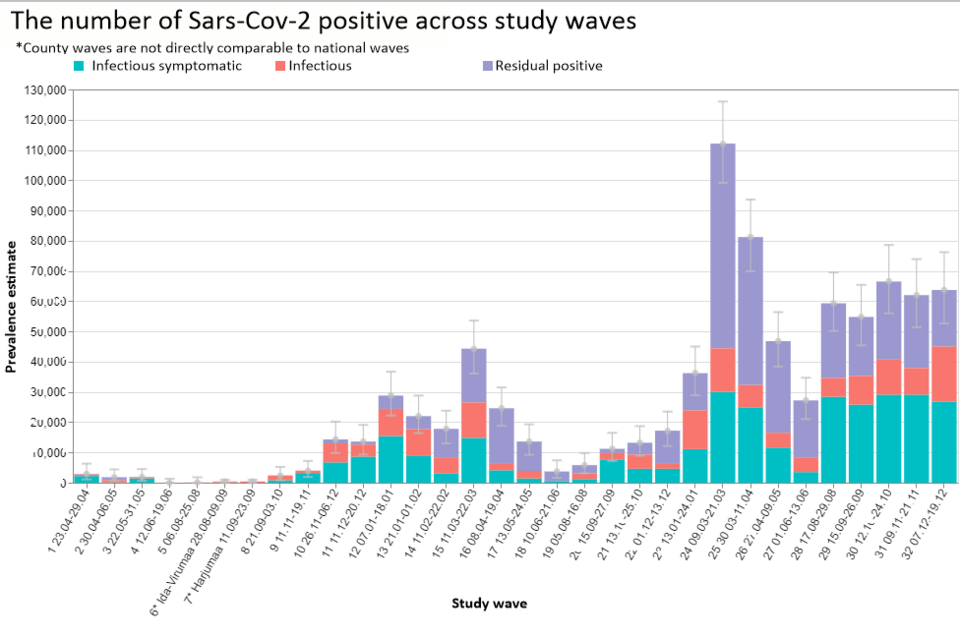-
Faculty of Arts and HumanitiesDean's Office, Faculty of Arts and HumanitiesJakobi 2, r 116-121 51005 Tartu linn, Tartu linn, Tartumaa EST0Institute of History and ArchaeologyJakobi 2 51005 Tartu linn, Tartu linn, Tartumaa EST0Institute of Estonian and General LinguisticsJakobi 2, IV korrus 51005 Tartu linn, Tartu linn, Tartumaa EST0Institute of Philosophy and SemioticsJakobi 2, III korrus, ruumid 302-337 51005 Tartu linn, Tartu linn, Tartumaa EST0Institute of Cultural ResearchÜlikooli 16 51003 Tartu linn, Tartu linn, Tartumaa EST0Institute of Foreign Languages and CulturesLossi 3 51003 Tartu linn, Tartu linn, Tartumaa EST0School of Theology and Religious StudiesÜlikooli 18 50090 Tartu linn, Tartu linn, Tartumaa EST0Viljandi Culture AcademyPosti 1 71004 Viljandi linn, Viljandimaa EST0Professors emeriti, Faculty of Arts and Humanities0Associate Professors emeriti, Faculty of Arts and Humanities0Faculty of Social SciencesDean's Office, Faculty of Social SciencesLossi 36 51003 Tartu linn, Tartu linn, Tartumaa EST0Institute of EducationJakobi 5 51005 Tartu linn, Tartu linn, Tartumaa EST0Johan Skytte Institute of Political StudiesLossi 36, ruum 301 51003 Tartu linn, Tartu linn, Tartumaa EST0School of Economics and Business AdministrationNarva mnt 18 51009 Tartu linn, Tartu linn, Tartumaa EST0Institute of PsychologyNäituse 2 50409 Tartu linn, Tartu linn, Tartumaa EST0School of LawNäituse 20 - 324 50409 Tartu linn, Tartu linn, Tartumaa EST0Institute of Social StudiesLossi 36 51003 Tartu linn, Tartu linn, Tartumaa EST0Narva CollegeRaekoja plats 2 20307 Narva linn, Ida-Virumaa EST0Pärnu CollegeRingi 35 80012 Pärnu linn, Pärnu linn, Pärnumaa EST0Professors emeriti, Faculty of Social Sciences0Associate Professors emeriti, Faculty of Social Sciences0Faculty of MedicineDean's Office, Faculty of MedicineRavila 19 50411 Tartu linn, Tartu linn, Tartumaa ESTInstitute of Biomedicine and Translational MedicineBiomeedikum, Ravila 19 50411 Tartu linn, Tartu linn, Tartumaa ESTInstitute of PharmacyNooruse 1 50411 Tartu linn, Tartu linn, Tartumaa ESTInstitute of DentistryL. Puusepa 1a 50406 Tartu linn, Tartu linn, Tartumaa ESTInstitute of Clinical MedicineL. Puusepa 8 50406 Tartu linn, Tartu linn, Tartumaa ESTInstitute of Family Medicine and Public HealthRavila 19 50411 Tartu linn, Tartu linn, Tartumaa ESTInstitute of Sport Sciences and PhysiotherapyUjula 4 51008 Tartu linn, Tartu linn, Tartumaa ESTProfessors emeriti, Faculty of Medicine0Associate Professors emeriti, Faculty of Medicine0Faculty of Science and TechnologyDean's Office, Faculty of Science and TechnologyVanemuise 46 - 208 51003 Tartu linn, Tartu linn, Tartumaa ESTInstitute of Computer ScienceNarva mnt 18 51009 Tartu linn, Tartu linn, Tartumaa ESTInstitute of GenomicsRiia 23b/2 51010 Tartu linn, Tartu linn, Tartumaa ESTEstonian Marine Institute0Institute of PhysicsInstitute of ChemistryRavila 14a 50411 Tartu linn, Tartu linn, Tartumaa EST0Institute of Mathematics and StatisticsNarva mnt 18 51009 Tartu linn, Tartu linn, Tartumaa EST0Institute of Molecular and Cell BiologyRiia 23, 23b - 134 51010 Tartu linn, Tartu linn, Tartumaa ESTTartu ObservatoryObservatooriumi 1 61602 Tõravere alevik, Nõo vald, Tartumaa EST0Institute of TechnologyNooruse 1 50411 Tartu linn, Tartu linn, Tartumaa ESTInstitute of Ecology and Earth SciencesJ. Liivi tn 2 50409 Tartu linn, Tartu linn, Tartumaa ESTProfessors emeriti, Faculty of Science and Technology0Associate Professors emeriti, Faculty of Science and Technology0Institute of BioengineeringArea of Academic SecretaryHuman Resources OfficeUppsala 6, Lossi 36 51003 Tartu linn, Tartu linn, Tartumaa EST0Area of Head of FinanceFinance Office0Area of Director of AdministrationInformation Technology Office0Administrative OfficeÜlikooli 17 (III korrus) 51005 Tartu linn, Tartu linn, Tartumaa EST0Estates Office0Marketing and Communication OfficeÜlikooli 18, ruumid 102, 104, 209, 210 50090 Tartu linn, Tartu linn, Tartumaa EST0Area of RectorRector's Strategy OfficeInternal Audit OfficeArea of Vice Rector for Academic AffairsOffice of Academic AffairsUniversity of Tartu Youth AcademyUppsala 10 51003 Tartu linn, Tartu linn, Tartumaa EST0Student Union OfficeÜlikooli 18b 51005 Tartu linn, Tartu linn, Tartumaa EST0Centre for Learning and TeachingArea of Vice Rector for ResearchUniversity of Tartu LibraryW. Struve 1 50091 Tartu linn, Tartu linn, Tartumaa EST0Grant OfficeArea of Vice Rector for DevelopmentCentre for Entrepreneurship and InnovationNarva mnt 18 51009 Tartu linn, Tartu linn, Tartumaa EST0University of Tartu Natural History Museum and Botanical GardenVanemuise 46 51003 Tartu linn, Tartu linn, Tartumaa EST0International Cooperation and Protocol Office0University of Tartu MuseumLossi 25 51003 Tartu linn, Tartu linn, Tartumaa EST0
High coronavirus prevalence is driven by a growing lack of concern about risks

The December results of the study on the prevalence of coronavirus, led by the University of Tartu, show that despite the persistently high prevalence of the coronavirus, the number of people who do nothing to change their behaviour after contact with a potentially infected person has risen to the highest level in the recent two years.

The figure shows the comparative overview of the results of 32 study waves. Source: University of Tartu
During the monitoring wave from 7–20 December, 1,864 adults were tested for coronavirus. 5.9% of them gave a positive virus test, and 4.2% were still infectious. This means that one in 24 adults is potentially infectious. The infection is equally prevalent in all age groups and among both men and women. Of the infected, 60% have generally mild or moderate symptoms.
According to Ruth Kalda, head of the prevalence study and Professor of Family Medicine at the University of Tartu, the corona situation is dominated by BA.5, the highly contagious Omicron variant. The wide prevalence of the virus is fuelled by a decreased sense of risk among people. One in seven adults have come into contact with a potentially infected person during this phase of the study, but 80% of them took no action to curb the possible spread of infection. “There has also been a significant increase in other seasonal respiratory illnesses, such as influenza and the RS virus, so it may be that people are already treating coronavirus as a relatively common viral disease, and neglecting special precautions. However, as the severe cases of all these viruses may require hospitalisation, especially in young children and the elderly, it is advisable to minimise close contact as much as possible in case of any signs of illness ,” Kalda said.
This time, 1,876 people participated in the antibodies study; 91% of them had antibodies. This figure has remained unchanged since September. As for the prevalence of infection among people who have been vaccinated, there is no significant difference between those vaccinated with a booster dose and those who have not had the booster dose. However, people who have received two booster doses have significantly higher antibody levels in their blood than those vaccinated with a single booster dose. The prevalence is lowest among those who have had coronavirus and been vaccinated.
While the share of people aged 65 and over who want a booster dose remains at one third, the middle-aged people’s interest in an additional vaccine dose has fallen to 13%. Kalda said that all those who belong to at-risk groups should have a booster dose to avoid serious illness. “Current hospitalisation statistics shows that it is mainly the elderly who are either unvaccinated or were vaccinated or given a booster dose a long time ago who are in hospital due to the coronavirus,” Kalda explained.
The coronavirus prevalence study is conducted by a broad-based research team of the University of Tartu in cooperation with Synlab Estonia, Medicum and Kantar Emor.
The prevalence study is the only tool in Estonia to monitor the prevalence of the coronavirus in the adult population. The findings will help decision-makers to make evidence-based decisions on using health care resources for the health and well-being of Estonian citizens. The study is commissioned by the Government of the Republic and funded by the European Regional Development Fund from the EU measure to respond to the Covid-19 pandemic.
More information about the study is available on the University of Tartu website.
Read more similar news




